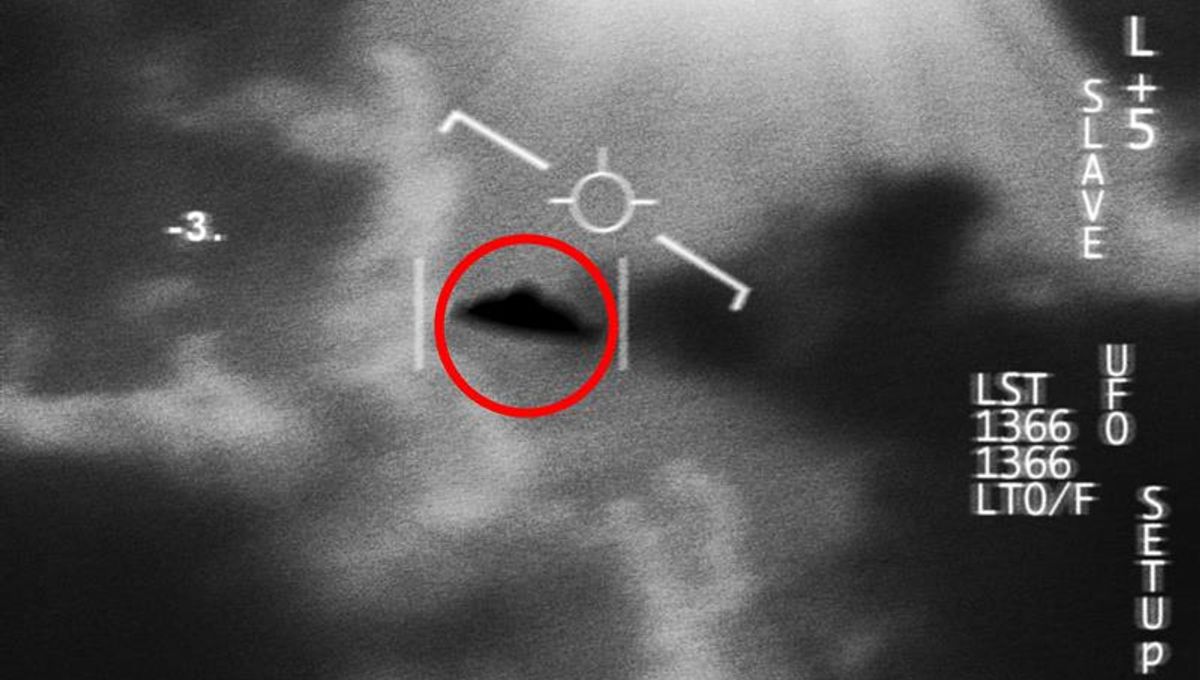
Is there life out there in the universe? This is perhaps one of the most compelling questions that haunts humanity. This is why some people take supposed evidence of extra-terrestrial visitation seriously – and the case of the strange metal shard that was recently subjected to scientific assessment (and no, it’s probably not aliens) is a good example of this.
The shard, so the story goes, was supposedly part of an unidentified anomalous phenomenon (UAP) that crashed to Earth back in the late 1940s. This was the era of the Roswell incident that captured the imaginations of people across the world and continues to grasp them to this day. Although the supposed crashed Roswell UAP was little more than a US Air Force balloon, the idea that aliens visited the planet remains popular today.
Then there’s the strange shard of metal that ended up in the hands of the UFO hunting organization, To The Stars (co-founded by Tom DeLonge, also known as guitarist and vocalist for Blink-182). In 2019, a spokesperson told the New York Times that To The Stars had “exotic material samples from U.F.O.s” which they believed came from the original Roswell crash site.
The metal had the potential to rewrite history if it could be proven to be a legitimate piece of alien technology – and samples could be tested by for this exact purpose. This is where All-Domain Anomaly Resolution Office (AARO) comes in. This office of the US government investigating unidentified anomalous phenomena (UAP) asked Oak Ridge National Laboratory (ORNL) to analyze a sample of the material in 2022. The results of this work have recently been published.
(Extra)terrestrial?
The material itself is a magnesium (Mg) alloy. Although it mostly contains magnesium and zinc, the specimen also contains bismuth, lead and traces of other elements.
According to a belief circulating in UFO enthusiast circles, the material exhibits extraordinary properties, such as having the supposed capacity to function as a terahertz waveguide. This, they argue, could have been used to generate “antigravity capabilities”.
As Popular Mechanics points out, waveguides are metal objects that transmit electromagnetic waves. A commonly owned example is your bog-standard microwave oven, which uses a magnetron to transmit waves to oven space itself, thereby cooking your lunch. If you scale this up enough, so believers claim, you can create something like a terahertz waveguide that could possibly levitate an object – of course, only if you knew how to do it and had the right materials.
So what did the ORNL find?
“ORNL assessed this specimen to be terrestrial in origin and that it does not meet the theoretical requirements to function as a terahertz (THz) waveguide,” they explain in their report.
This finding was based on their assessment of the material’s elemental and structural characteristics. In order to be capable of being a waveguide, the material would need to consist of a single layer of pure bismuth sandwiched between layers of magnesium alloy. Bismuth in this configuration could be capable of directing terahertz waves. However, this is not how the metal is arranged – firstly, the bismuth is not pure enough for this purpose, secondly there are multiple layers of bismuth between the magnesium. This would seriously disrupt its capabilities as a waveguide.
So much for its supposed alien properties. But what about its origins? Did the shard possess anything that indicates it originated from somewhere other than Earth? Unfortunately, this was not the case.
“[T]he specimen’s physical properties are consistent with a material of terrestrial origin”, the report stated.
If the material had originated on another planet, it should exhibit different ratios of isotopes that differ to those on Earth. But the analysis showed that the isotopic signature of the magnesium and lead were terrestrial in nature.
“Materials exhibit a predictable isotopic signature when formed in and exposed to terrestrial conditions. This specimen’s isotopic signature is consistent with terrestrial signatures and does not exhibit expected interstellar signatures”, the report added.
“Considering all available evidence, AARO assesses that this specimen is likely a test object, a manufacturing product or byproduct, or a material component of aerospace performance studies to evaluate the properties of Mg alloys.”
But while this result may be disappointing for those who hoped the metal was evidence of an alien technology, the process nevertheless shows that we know how to rule out what is from this planet and what isn’t, even if we do not have anything suitable to test it on. Still, To The Stars has put out its own statement on the report. Apparently, their researchers would like to clarify some points with the ORNL scientists.
The ORNL report comes a matter of months after the Pentagon’s report exploring whether the US government has been covering up evidence of alien encounters and their technology since the 1940s. Like this latest report, the conclusions probably represent a disappointment or frustration for those who want to believe in alien visitation.
The “truth” may indeed be out there, but that doesn’t mean you’ll like it.
Source Link: Strange Metal Shard Probably Isn't Evidence Of Alien Technology, A US National Laboratory Concludes